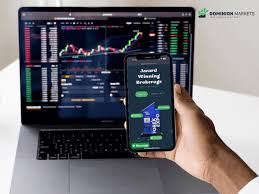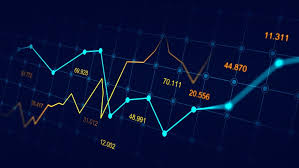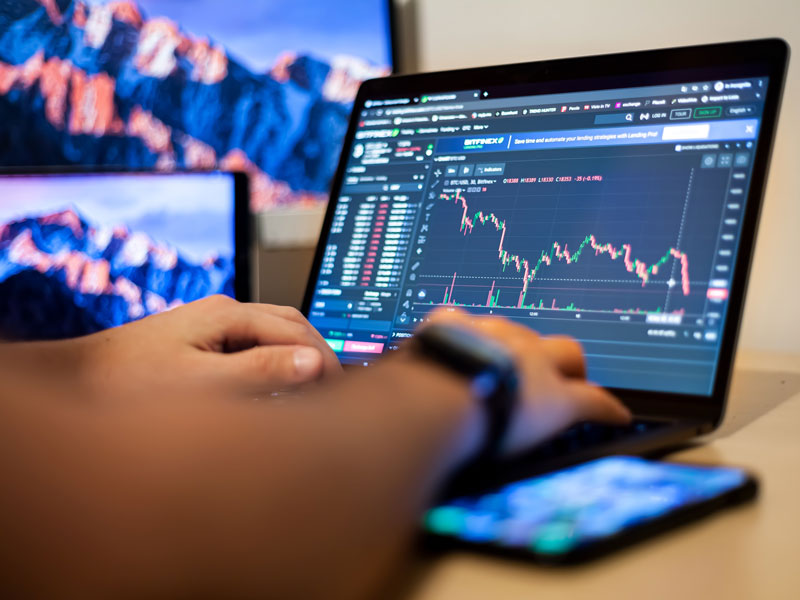
Unlocking Success with Demo Forex Trading: A Comprehensive Guide
Forex trading can seem daunting, especially for beginners. However, demo forex trading presents a wonderful opportunity for aspiring traders to practice their skills and strategies without the financial risk associated with real trading. Through this article, we will delve into the world of demo forex trading, explore its benefits, limitations, and provide tips for maximizing your experience. If you’re looking to get started with forex trading, be sure to also check out demo forex trading Best Argentine Brokers for valuable insights.
What is Demo Forex Trading?
Demo forex trading is a practice mode offered by forex brokers that allows traders to execute trades on a simulated trading platform. This platform mirrors the functionalities of real trading environments but utilizes virtual money instead of actual funds. This enables traders to practice their skills and test their strategies without any financial burden.
Why Choose Demo Forex Trading?
There are several compelling reasons to engage in demo forex trading. Some of them include:
1. Risk-Free Learning
For beginners, the most significant advantage of demo trading is the ability to learn without financial risk. You can familiarize yourself with the trading platform, learn about different trading instruments, and understand market dynamics without the fear of losing hard-earned money.
2. Strategy Testing
Once you’ve learned the basics, demo trading allows you to test various trading strategies in a safe environment. You can analyze the effectiveness of different approaches in real market conditions and make adjustments accordingly. Testing a trading strategy in actual market conditions on a demo account is essential before implementing it with real money.
3. Platform Familiarization
Every forex broker has its own trading platform with unique features and tools. Demo accounts give you the opportunity to explore these features without pressure. This experience is invaluable when you transition to a live trading account.
4. Emotional Resilience Development
Trading can be an emotional rollercoaster. Demo trading provides you with the opportunity to manage your emotions while making trades, preparing you for the real pressures of live trading where losses and gains can elicit strong emotional responses.
Getting Started with Demo Forex Trading

If you’re ready to dive into demo forex trading, here are the essential steps to get you started:
1. Choose a Reputable Forex Broker
The first step to successful demo trading is selecting a reputable forex broker. Look for brokers that offer a robust demo account and are regulated in your jurisdiction. Ensure they provide a trading platform that you find user-friendly and equipped with the necessary tools for your trading style.
2. Open a Demo Account
Opening a demo account is typically straightforward. Most brokers will require you to fill out a registration form. After this, you’ll receive access to the trading platform along with virtual funds to start your trading journey.
3. Familiarize Yourself with the Trading Platform
Take the time to learn the ins and outs of the trading platform. Explore features such as charting tools, technical indicators, and other analytical tools. Understanding how to utilize these features effectively can significantly influence your trading performance.
4. Learn to Analyze the Market
Successful forex trading hinges on your ability to analyze market conditions. Start by learning fundamental and technical analysis. Fundamental analysis involves economic indicators, while technical analysis uses past price movements to predict future trends. Mastering both types of analysis will give you an edge in your trading.
5. Develop and Test a Trading Strategy
Once you feel comfortable with the trading platform and have a grasp on market analysis, start developing your own trading strategy. Use your demo account to test this strategy under various market conditions. Analyze the results, and don’t be afraid to adjust your approach based on what you learn during this testing phase.
6. Keep a Trading Journal
Maintaining a journal is crucial for any trader. Document your trades, including entry and exit points, the reasoning behind each trade, and the outcomes. This reflection will help you identify patterns in your trading behavior—whether successful or unsuccessful—and refine your strategy accordingly.
Challenges of Demo Forex Trading
While demo trading presents many advantages, it also has its challenges, which traders should be aware of:
1. Lack of Emotional Pressure

One notable difference between demo and live trading is the absence of real financial stakes in demo trading. This can result in overconfidence or poor decision-making, as traders may adopt risky behaviors that they wouldn’t entertain with real money on the table.
2. Overfitting Strategies
Some traders become too focused on optimizing their strategies during demo trading. This can lead to overfitting, where a strategy performs exceptionally well under specific market conditions but fails catastrophic in real-world trading scenarios.
3. Transitioning to Live Trading
The shift from demo to live trading can often be a significant hurdle. Traders may struggle with emotional responses in live trading scenarios, which can affect decision-making. It’s crucial to prepare for this transition mentally and emotionally.
Best Practices for Maximizing Your Demo Trading Experience
To make the most of your demo trading experience, consider these best practices:
1. Treat it Like Real Trading
Approach your demo trading sessions as if you were trading with real money. Stick to your trading plan, manage your risks meticulously, and apply the same discipline that you would in a live trading environment.
2. Set Realistic Goals
Establish clear, achievable goals for your demo trading. Rather than fixating solely on profits, focus on process-oriented goals such as improving your analysis, refining your strategy, or managing your emotions better.
3. Regularly Review Your Performance
Consistent assessment of your demo trading performance is key to improvement. Review your trades, identify winning methods, and understand mistakes, ensuring that you learn from every experience.
4. Don’t Rush to Go Live
Take your time in the demo trading phase. Make sure you are adequately prepared before transitioning to a live trading account. Once you feel confident in your trading abilities and strategies, and have a solid plan in place, you can start live trading.
Conclusion
Demo forex trading is an essential stepping stone for anyone serious about succeeding in the forex market. It provides invaluable insights and practice opportunities without the risks associated with live trading. By understanding its benefits, challenges, and best practices, traders can enhance their skills and prepare themselves for the dynamic world of forex trading. Whether you’re a novice or have some experience, investing time in demo trading is a strategy that can lead to long-term success.



